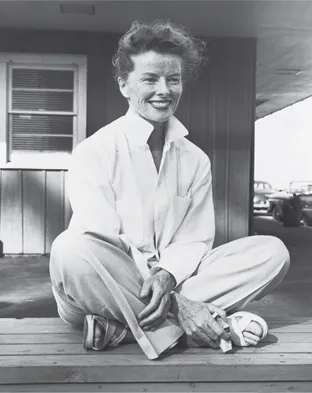1 Recognizing style
The eyes of the beholder
Style is something we all want and fear. We want to have “real style,” but to be more than just “stylish.” We want to be a master of style, never a slave to it. We want style, without mistaking style for substance.
Since our feelings are ambivalent towards it in our own lives, most of us are tentative in our early efforts at style in the theatre. To understand style acting, we must recognize it in our offstage lives where the word is used synonymously with: form – manner – method – way – fashion – vogue – mode – chic – craze – fad – rage – practice – habit – air – distinction – typical presentation – characteristic behavior – elegance – wording – means of expressing – and execution.
Style is the way something is done, rather than the core act itself. In writing classes, separate grades may be given for style and content. A beautifully written essay may say nothing, or an awkwardly expressed one may have profound insights. Style is also perceived in terms of expectations. Contemporary realistic theatre, where each actor is cast close to age and type, is standard. It is our dominant style. Any time a show moves away from this, it is called “stylized” or is described as done in “the ‘fill-in-the-blank’ style.” You stylize an event by boldly removing it from everyday, expected behavior. The more stylized a production, the more conventions or rules of make-believe the audience must accept, in order to appreciate it.
“Style work” may refer to any journey you take outside of mastered, known territory into new ground. This often involves changing yourself enough to believably enter another world, formerly unfamiliar to you or to most audiences. The same happens outside the theatre, where people who are thought of as having real style are those who move with relative ease between worlds.
Defining style
Style is a way of understanding the world and then entering it based on what you see
If you see the world as a vicious concrete jungle, you might wear leather and studs and often use the “f” word. If you see the world as an enchanted romantic garden, you might wear flowing chiffon and improvise poetry. If you change your mind in the middle of the day (stuck in chiffon, spouting the “f” word), you have trouble reconciling feelings with presentation. Style is the external manifestation of some inner drive. It is a set of choices in action, a relationship between what you feel and what you present in the world. The world may be a club, a country, a period, or a play. It may be all of the above.
A film scholar noted difficulties in mounting serious plays about infidelity in France, because the French tend to view the subject humorously or ironically. A belief shared by enough people is perceived as the dominant style. If you see a character in a French film being told about a neighbor’s affair, what do you expect that character to do? Shrug? Smile? Wink? Briefly philosophize? Probably. Rage? Weep? Register shock? Get a gun? Probably not.
Too often in the theatre, outward manifestation of inward belief is picked up without the belief itself. When you attend a bad production of a period style play, you may see a series of poses, without a sense of anything going on behind them, as if a director had said, “You should all shrug a lot and then smile because that’s what French people do” and had neglected to explore the various motives in the culture that might encourage the act. Without belief, the whole venture looks hollow. There are likely to be shrugs in all the wrong places.
Style is what is shared by characters in a play (or people in a group), while characterization is what makes them distinct from each other
All characters in a play share qualities, a collective characterization that ties them together. In some musicals, they all wear sequins and tap shoes (even to the office), and when someone says “I’ve got an idea!!!,” they all lean way in to him and shout “What??!!” simultaneously. Yet, the sweet hoofer from Kansas in the chorus is clearly different from the temperamental, vamping star, even in this “stylized” world. They share style, but as distinct entities within it.
The balance between interesting, idiosyncratic, even quirky character work and co...


